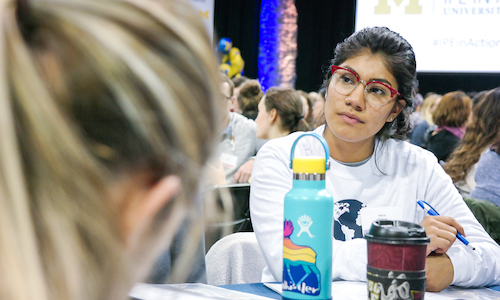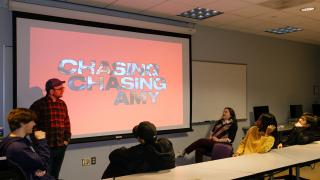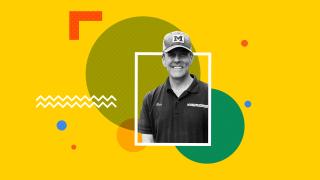
Anyone who has — or knows someone with — complex healthcare needs knows regular visits with multiple health professionals is par for the course. In any given month, a patient might interact with a primary care doctor, several nurses, multiple medical specialists, a pharmacist, a dentist, a social worker and a therapist. Each brings their own strengths. But according to Professor Patricia Wren, chair of UM-Dearborn’s Department of Health and Human Services, having access to a comprehensive roster of specialists doesn’t always equate with effective care.
“As we get more and more specialized, the risk is that we can’t see the forest for the trees,” Wren explained. “Historically, we’ve had a pulmonologist work on your lungs, and a neurologist work on your brain, and so on. But we’re starting to see that there are all kinds of real-life issues — like food or housing insecurity, or mental health — that impact a person’s physical health and wellness. So managing the whole person in the whole of their environment can be crucial to creating good outcomes."
That awareness, Wren said, has led to an increased push in the health fields for more integrated, team-oriented approaches to care. The basic idea is that everyone from a person’s neurologist to their pharmacist to their social worker needs to work in unison to address a patient’s unique web of needs — with a special eye to the issues that impact each other. And Wren said that paradigm shift is also leading to new strategies for educating our future healthcare professionals.
A recent event at Crisler Center, which brought together more than 1,200 students and faculty from all three U-M campuses, provides a good example of how that new ethos of collaboration is reaching students early on in their education. The heart of the Fourth Annual Interprofessional Education in Action Day was a faculty-facilitated breakout session, in which small teams of students representing a full range of health professions dug into the challenges of a real-life “complex care” case.
“The patient was a 63-year-old white woman named Mary,” Wren explained. “Among the things she’s dealing with: She’s a diabetic, she has blood clots, hearing loss, rheumatoid arthritis, joint disease and a mouthful of dental problems. She also presents with psychosis and depression. She’s been homeless in the past, and has some food assistance, but lives alone and has an adult daughter. And so our job was to look at Mary’s case from the vantage point of each of our professions and think about how we could best care for her.”
The goal, Wren said, was not to come up with a single, correct answer. But rather to reveal how Mary’s case required the expertise of multiple professionals — and most importantly — how her care depended on those professionals working as a team.
There were more than a few light bulb moments in Wren’s group.
“I remember one student, all of a sudden, asked about where Mary lived and what kind of transportation she had. And at that point the dentistry student in the group was, like, ‘Wow, I just assume people show up for their appointments. I never think about how they get there, or what their circumstances are.’ So I thought that was brilliant: Suddenly you had this student who was thinking way outside the traditional boundaries of their profession.”
And those small realizations can have large and lasting implications as those students graduate and become health professionals.
“The thing to remember is that most physicians are entrepreneurs,” Wren said. “So when they start a practice, in addition to employing a nurse or a physician assistant, now they might also think about including a medical social worker or a child life specialist on their staff. We want them to see that there is value added to their practice in taking this kind of multidisciplinary team approach to patient care.”
For senior Alicia Zelaya, one of 36 UM-Dearborn students who participated in the IPE in Action Day, the event also revealed some value in her decision to major in public health. She said as an undergraduate in a breakout group full of graduate students studying medicine and pharmacy, she assumed she and the other public health student in her group would hang back, while the specialists crafted a care plan.
“But it was the opposite,” Zelaya said. “In a case like Mary’s, your starting point isn’t any one of her health issues — it’s Mary. Unless you can get her to her medical appointments, or get her food assistance, and keep her motivated to be invested in her care, it’s going to be a struggle. So in my group, it was the public health students who were leading the discussion, because we’re sort of trained to think like that. For me, that was really validating. Now it’s easier to see how and where I can make a difference.”






